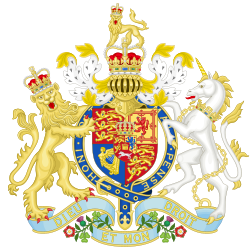Content
The provisions of the act were similar to those of previous Seditious Meetings Acts, such as those of 1795 and 1817, although more severe constraints were added. [4] [5] The law forbade all meetings of more than 50 people called "for the purpose...of deliberating upon any public grievance, or upon any matter or thing relating to any trade, manufacture, business, or profession, or upon any matter in church or state," unless the meeting had been summoned by an authorised official. The prohibition did not apply to meetings where the attendees were all inhabitants of a single parish or township, but written notice was required to be submitted to a justice of the peace at least six days prior, and the JP was empowered to change the time and place of the meeting at his discretion. [6] [7] Attendees were prohibited from carrying arms, and the display of flags, banners and other ensigns or emblems at the assembly was banned. [8]
Under the act, sheriffs and other officials were authorised to attend any meetings held within their jurisdictions. In the event that the meeting was found to be unlawful, they could order its participants to disperse; anyone who ignored such an order was liable to be punished with up to seven years of transportation. [9]
The act also established regulations for places where lectures or debates were held, requiring these to be licensed and allowing officials to inspect them. Universities and certain other institutions, however, were exempted from these provisions. [10]
Unlike the Seditious Meetings Act 1817, the 1819 Act allowed for meetings to be held in the parishes of St Margaret and St John in Westminster. [11] On the other hand, its provisions were extended to Ireland, which had been exempted under the previous law. [12] The Act took effect in London and the surrounding regions the day after its passage, and in the rest of the country after ten days, and was to remain in force for five years. [13]
This page is based on this
Wikipedia article Text is available under the
CC BY-SA 4.0 license; additional terms may apply.
Images, videos and audio are available under their respective licenses.

